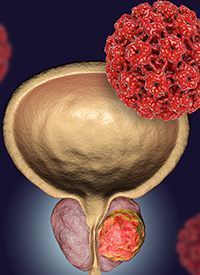Article
Novartis Suspends Production of Radioligand Therapy Agents in New Jersey and Italy
Author(s):
Pharmaceutical giant Novartis has temporarily halted radioligand therapy production at sites in Millburn, New Jersey, and Ivrea, Italy, citing potential quality issues in its manufacturing processes.

Pharmaceutical giant Novartis has temporarily halted radioligand therapy production at sites in Millburn, New Jersey, and Ivrea, Italy, citing potential quality issues in its manufacturing processes. The company is temporarily stopping delivery of lutetium (177Lu) oxodotreotide (Lutathera) in the United States and Canada, and 177Lu-PSMA-617 (Pluvicto) in the United States.1
Lutathera is currently approved for gastroenteropancreatic neuroendocrine tumors (GEP-NETs). The FDA approved 177Lu-PSMA-617 for patients with prostate-specific maturation antigen (PSMA)–positive metastatic castration-resistant prostate cancer (mCRPC) in March 2022.2
In a news release, Novartis said some doses of Lutathera will be available in Europe and Asia, although there may be some delays in supply. The company added that it expects to resume some deliveries in the next 6 weeks.
Furthermore, Novartis is putting a temporary hold on screening and enrollment for 177Lu-PSMA-617 clinical trials globally and Lutathera clinical trials in the United States and Canada. However, the company stresses that there is currently no indication of any risk to patients. Novartis has notified treatment sites about the problem and recommended close monitoring of patients who have recently been injected.
177Lu-PSMA-617 won approval from the FDA based on findings from the international, prospective, open-label, multicenter, randomized, phase 3 VISION trial (NCT03511664). In the study, 177Lu-PSMA-617 plus standard of care (SOC) therapy demonstrated significant improvement in overall survival (OS) and radiographic progression-free survival (rPFS) compared with SOC alone in patients with PSMA-positive mCRPC.3
At a median follow-up of 20.9 months, the median OS was 15.3 months for 177Lu-PSMA-617 /SOC vs 11.3 months for SOC alone (HR, 0.62; 95% CI, 0.52-0.74; P <.001). The median rPFS was 8.7 months vs 3.4 months in favor of the experimental arm (HR, 0.40; 99.2% CI, 0.29-0.57; P <.001).
The FDA approved Lutathera in 2018 based on findings from the phase 3 NETTER-1 trial (NCT01578239) comparing Lutathera with high-dose octreotide LAR for patients with grade 1 or 2 metastatic midgut NETs. Investigators observed an 82% reduction in the risk for progression or death with Lutathera compared with octreotide.
In NETTER-1, 229 patients with midgut NETs who progressed on standard octreotide were randomly assigned to Lutathera (n = 116) or high-dose octreotide (n = 113). Investigators administered 4 doses of 7.4 GBq of Lutathera every 8 weeks in combination with standard-dose octreotide for symptom control. In the control arm, patients received 60 mg of octreotide LAR every 4 weeks.
Investigators presented final OS data from NETTER-1 at the 2021 American Society of Clinical Oncology Annual Meeting. Following disease progression on randomized treatment or completion of an 18-month treatment period, patients in both arms entered long-term follow-up and could receive further anticancer treatment as recommended by their physicians.4
A total of 101 (86.3%) patients in the Lutathera arm and 99 (86.8%) in the control arm entered long-term follow-up. Final analysis occurred 5 years after the last patient entered randomization, following 142 deaths, with a median follow-up of more than 76 months. During long-term follow-up, 36% of patients in the control arm crossed over to receive Lutathera, most (22.8%) within 24 months.
The median OS was 48.0 months (95% CI, 37.4-55.2) in the Lutathera arm compared with 36.3 months (95% CI, 25.9-51.7) in the control arm (HR, 0.84; 95% CI, 0.60-1.17; P = 0.30). The difference in survival was not significant, which investigators said could be attributed to the high rate of crossover. However, they noted that Lutathera induced a clinically and statistically significant improvement in PFS as a primary end point (HR, 0.18; P < .0001), as well as a clinically meaningful trend towards improvement in median OS of 11.7 months.
References
- Novartis provides update on production of radioligand therapy medicines. News release. Novartis. May 5, 2022. Accessed May 9, 2022. https://bit.ly/3P8mKM4
- Novartis PluvictoTM approved by FDA as first targeted radioligand therapy for treatment of progressive, PSMA positive metastatic castration-resistant prostate cancer. News release. Novartis. March 23, 2022. Accessed May 9, 2022. https://bit.ly/3iw9bab
- Sartor O, de Bono J, Chi KN, et al. Lutetium-177–PSMA-617 for metastatic castration-resistant prostate cancer. N Engl J Med. 2021;385(12):1091-1103. doi:10.1056/NEJMoa2107322
- Strosberg JR, Caplin ME, Kunz PL, et al. Final overall survival in the phase 3 NETTER-1 study of lutetium-177-DOTATATE in patients with midgut neuroendocrine tumors. J Clin Oncol. 2021;39(suppl 15):4112. doi:10.1200/JCO.2021.39.15_suppl.4112









